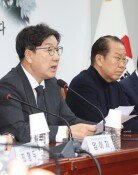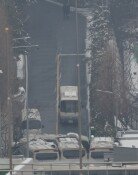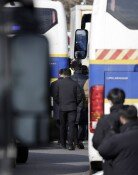Not enough beds to accommodate growing number of patients
Not enough beds to accommodate growing number of patients
Posted February. 27, 2020 07:40,
Updated February. 27, 2020 07:40
With the number of confirmed coronavirus cases in South Korea exceeding 1,200, the operation rate of negative pressure sickbeds is nearing 100%, signaling that shortage of sickbeds is imminent. The number of negative pressure sickbeds that can provide isolated treatment is 1,077, which means that the number of confirmed patients are higher than the number of beds. The government’s delay in the designation of dedicated hospitals for COVID-19 treatment has caused difficulties in securing additional wards.
Since Feb. 20 when the number of patients exceeded 100 in the nation, more than 200 new confirmed cases are being discovered every day. Globally, around 84,000 confirmed cases have been found in 30 countries. Experts liken COVID-19 to the novel influenza rather than MERS, given its relatively low fatality rates. MERS was rooted out in South Korea in 190 days, but the 2009 novel influenza took a year to contain. This means that we need to prepare to deal with the latest coronavirus for the long term as well.
We cannot apply the same strategies to contain different situations. Different methods need to be in place when the number exceeds 1,000. Medical experts already say that the medical system is being overloaded. We need to prioritize tasks to make efficient use of limited resources.
First, we need to set criteria on who will be hospitalized in wards. Negative pressure wards should prioritize patients at advanced stage. On Tuesday, a patient at the Daenam Hospital in Cheongdo, North Gyeongsang Province, who spent all night searching for a negative pressure ward, barely managed to find one at Gachon University Gil Hospital in Incheon. This situation was caused as all the patients, regardless of whether they have light or serious symptoms, are hospitalized in negative pressure wards. Eventually those at advanced stages are finding it increasingly difficult to get timely treatment.
We also need criteria to manage patients with light symptoms and those in the recovering stage. The government is preparing to assign a designated hospital that that can accommodate 10,000 sickbeds, but it would be complicated as it would require the removal of other hospitalized patients. Medical experts advise to provide swift and timely treatment and discharge the patients, or have patients self-contained under strict criteria.
Fourteen days, the self-containment period of medical staff, should be also segmented in accordance with the frequency of patient contact. With the exponential growth of patients, there are more and more medical staff being restrained, causing a vacuum of medical resources. Overworked medical experts examining too many patients are causing burdens on the medical system overall. We need to consider reducing the containment period for medical staff that have not been in close contact with confirmed cases and those that do not show any symptoms.
The public should prepare to deal with the situation for the longer term. Everyone should make a strict habit of adhering to personal sanitation principles. Hoarding necessities is not a wise idea, but we should have medical supplies and necessities ready. We need to revise company criteria for office shutdown or work at home to prevent the absence of a confirmed patient impacting work. As long as we stay calm, we can overcome the challenge, though it will take much effort.







